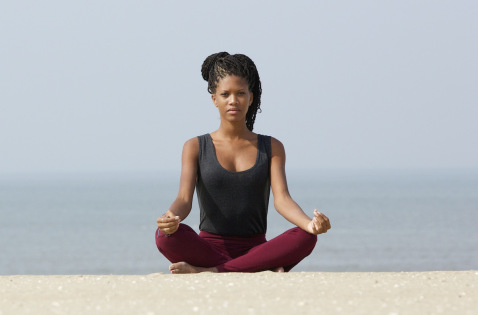
Equal Opportunity Addict
I have to come clean: I’m addicted to everything I’ve ever tried. Alcohol, marijuana, tobacco, you name it. If I’ve tried it—and believe me, I’ve tried everything—I’m addicted to it. I joke with myself that it’s my early conditioning, the egalitarian milieu in which I was raised, that made me such an open-minded addict. I’m open to ALL addictions, it really doesn’t matter what it is; I’ll accept it and embrace it. Who am I to judge? I accept all colors of the rainbow, and believe me, when it comes to addiction, I most certainly celebrate diversity—just like we did at home when I was little.
Yoga and Recovery
When I first quit drinking over two decades ago and started going to AA meetings, I’d been practicing yoga for about three years. I was lucky; the arts and culture I’d been exposed to during my formative years led me to study theater in college, and it was through theater that I was first exposed to yoga. For one show in particular, the director hired a yoga teacher for the cast. We practiced before rehearsals as a way to ground our bodies, focus our minds and bring our attention fully to the moment. I really enjoyed it, and made a point to remember the routines we practiced. When I quit drinking three years later, I found that I had loads of extra energy and anxiety that I needed to deal with—energy and anxiety that I’d been masking with my daily alcohol consumption. I was a runner, so I tried running; I loved to ride my bicycle, so I rode a lot; however, while running and cycling went a long way toward making me physically tired enough to fall asleep, it didn’t really address the emotional issues that were the root cause of the various forms of anxiety I was experiencing. Despite running and cycling to the point of physical exhaustion, I was still having some sleepless nights. One evening, after work, I was too tired to go for a run or a bike ride, but my mind was still turned on. My thoughts were racing, and I knew there was almost no chance of getting any sleep. So, on a whim, I decided to practice some of the yoga I’d learned a few years earlier. It was a revelation. Perhaps even a moment of clarity. What I found was that not only did the yoga make my body feel better—all the aches and pains of restaurant work were eliminated—but it also calmed my mind and brought me the sense of peace that I desperately needed.
Mindfulness and Recovery
The therapeutic application of mindfulness practices to stress, anxiety, depression and addiction was pioneered in the late 1970s by John Kabat-Zinn at the University of Massachusetts when he developed a technique called Mindfulness Based Stress Reduction, or MBSR. Kabat-Zinn based MBSR on principles she borrowed from yoga, Buddhist philosophy and meditation. When I learned yoga in the late 1980s and used it to help my recovery from alcohol addiction in the early 1990s, the phrase “mindfulness” had still not caught on nationwide, and I had no idea that what I was learning was soon to become cutting-edge addiction therapy. What I knew was that after just about 20 minutes of yoga practice, I felt calm, centered and ready to face both the world and my recovery. Simply put, every time I practiced yoga, I felt better. I knew that yoga was teaching me to slow down and pay attention to my breath and my body. My yoga teacher’s primary mantra was: “Be where you are in the pose. Don’t force anything, and don’t judge. Don’t worry about how flexible or tight you are, or what anyone else is doing. Just be in the moment and accept where you are, right now.” Because of her teaching, I knew that I was learning to experience my physical and emotional states in a positive and non-judgmental way. Yoga was teaching me to accept myself, as is, both internally and externally. What I didn’t know then was that my yoga practice was doing a wide range of healthy things for my body and mind that scientific studies have since confirmed: it was lowering the levels of stress hormones coursing through my system, increasing the levels of beneficial neurotransmitters in brain areas related to anxiety, and changing alkali levels in my bloodstream to improve my body’s ability to process oxygen. I didn’t realize I was in groundbreaking therapeutic territory—I just knew that yoga felt great, and it worked. What I know now is that yoga taught me the essence of mindfulness — the ability to cultivate “a moment-to-moment awareness of one’s experience without judgment”— that is now at the very heart of my recovery. By Angus Whyte
